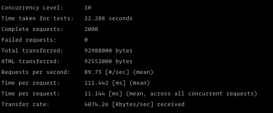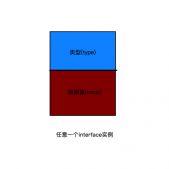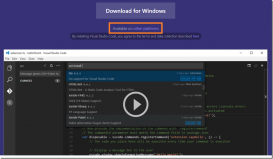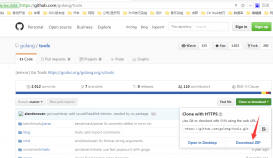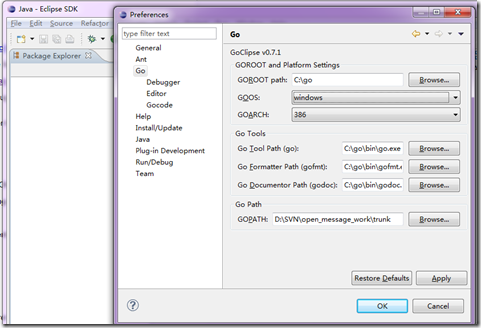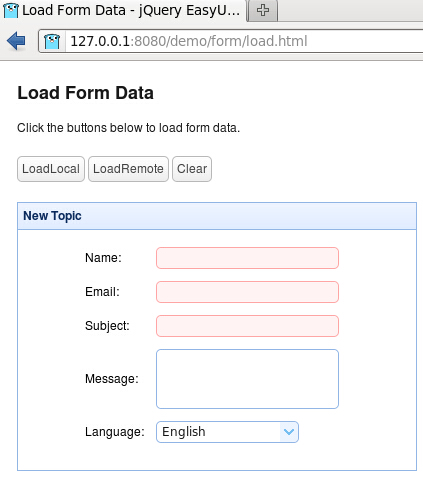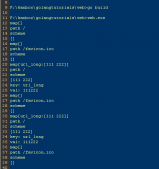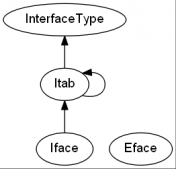时区
先写一段测试代码:
|
1
2
3
4
5
6
7
8
9
10
11
12
13
14
15
16
17
18
19
20
21
22
23
24
25
26
27
28
29
30
31
32
33
34
35
36
37
38
39
40
41
42
43
|
const TIME_LAYOUT = "2006-01-02 15:04:05"func parseWithLocation(name string, timeStr string) (time.Time, error) { locationName := name if l, err := time.LoadLocation(locationName); err != nil { println(err.Error()) return time.Time{}, err } else { lt, _ := time.ParseInLocation(TIME_LAYOUT, timeStr, l) fmt.Println(locationName, lt) return lt, nil }}func testTime() { fmt.Println("0. now: ", time.Now()) str := "2018-09-10 00:00:00" fmt.Println("1. str: ", str) t, _ := time.Parse(TIME_LAYOUT, str) fmt.Println("2. Parse time: ", t) tStr := t.Format(TIME_LAYOUT) fmt.Println("3. Format time str: ", tStr) name, offset := t.Zone() name2, offset2 := t.Local().Zone() fmt.Printf("4. Zone name: %v, Zone offset: %v\n", name, offset) fmt.Printf("5. Local Zone name: %v, Local Zone offset: %v\n", name2, offset2) tLocal := t.Local() tUTC := t.UTC() fmt.Printf("6. t: %v, Local: %v, UTC: %v\n", t, tLocal, tUTC) fmt.Printf("7. t: %v, Local: %v, UTC: %v\n", t.Format(TIME_LAYOUT), tLocal.Format(TIME_LAYOUT), tUTC.Format(TIME_LAYOUT)) fmt.Printf("8. Local.Unix: %v, UTC.Unix: %v\n", tLocal.Unix(), tUTC.Unix()) str2 := "1969-12-31 23:59:59" t2, _ := time.Parse(TIME_LAYOUT, str2) fmt.Printf("9. str2:%v,time: %v, Unix: %v\n", str2, t2, t2.Unix()) fmt.Printf("10. %v, %v\n", tLocal.Format(time.ANSIC), tUTC.Format(time.ANSIC)) fmt.Printf("11. %v, %v\n", tLocal.Format(time.RFC822), tUTC.Format(time.RFC822)) fmt.Printf("12. %v, %v\n", tLocal.Format(time.RFC822Z), tUTC.Format(time.RFC822Z)) //指定时区 parseWithLocation("America/Cordoba", str) parseWithLocation("Asia/Shanghai", str) parseWithLocation("Asia/Beijing", str)}testTime() |
输出:
0. now: 2018-09-19 19:06:07.3642781 +0800 CST m=+0.005995601
1. str: 2018-09-10 00:00:00
2. Parse time: 2018-09-10 00:00:00 +0000 UTC
3. Format time str: 2018-09-10 00:00:00
4. Zone name: UTC, Zone offset: 0
5. Local Zone name: CST, Local Zone offset: 28800
6. t: 2018-09-10 00:00:00 +0000 UTC, Local: 2018-09-10 08:00:00 +0800 CST, UTC: 2018-09-10 00:00:00 +0000 UTC
7. t: 2018-09-10 00:00:00, Local: 2018-09-10 08:00:00, UTC: 2018-09-10 00:00:00
8. Local.Unix: 1536537600, UTC.Unix: 1536537600
9. str2:1969-12-31 23:59:59,time: 1969-12-31 23:59:59 +0000 UTC, Unix: -1
10. Mon Sep 10 08:00:00 2018, Mon Sep 10 00:00:00 2018
11. 10 Sep 18 08:00 CST, 10 Sep 18 00:00 UTC
12. 10 Sep 18 08:00 +0800, 10 Sep 18 00:00 +0000
America/Cordoba 2018-09-10 00:00:00 -0300 -03
Asia/Shanghai 2018-09-10 00:00:00 +0800 CST
cannot find Asia/Beijing in zip file C:\Go\/lib/time/zoneinfo.zip
从以上代码的测试结果可以得出几点:
- time.Now 得到的当前时间的时区跟电脑的当前时区一样。
- time.Parse 把时间字符串转换为Time,时区是UTC时区。
- 不管Time变量存储的是什么时区,其Unix()方法返回的都是距离UTC时间:1970年1月1日0点0分0秒的秒数。
- Unix()返回的秒数可以是负数,如果时间小于1970-01-01 00:00:00的话。
- Zone方法可以获得变量的时区和时区与UTC的偏移秒数,应该支持夏令时和冬令时。
- time.LoadLocation可以根据时区名创建时区Location,所有的时区名字可以在$GOROOT/lib/time/zoneinfo.zip文件中找到,解压zoneinfo.zip可以得到一堆目录和文件,我们只需要目录和文件的名字,时区名是目录名+文件名,比如"Asia/Shanghai"。中国时区名只有"Asia/Shanghai"和"Asia/Chongqing",而没有"Asia/Beijing"。
- time.ParseInLocation可以根据时间字符串和指定时区转换Time。
- 感谢中国只有一个时区而且没有夏令时和冬令时,可怕的美国居然有6个时区,想想都可怕。
神奇的time.Parse
一开始使用time.Parse时很不习惯,因为非常奇怪的layout参数。
除了golang自带定义的layout:
|
1
2
3
4
5
6
7
8
9
10
11
12
13
14
15
16
17
18
|
const ( ANSIC = "Mon Jan _2 15:04:05 2006" UnixDate = "Mon Jan _2 15:04:05 MST 2006" RubyDate = "Mon Jan 02 15:04:05 -0700 2006" RFC822 = "02 Jan 06 15:04 MST" RFC822Z = "02 Jan 06 15:04 -0700" // RFC822 with numeric zone RFC850 = "Monday, 02-Jan-06 15:04:05 MST" RFC1123 = "Mon, 02 Jan 2006 15:04:05 MST" RFC1123Z = "Mon, 02 Jan 2006 15:04:05 -0700" // RFC1123 with numeric zone RFC3339 = "2006-01-02T15:04:05Z07:00" RFC3339Nano = "2006-01-02T15:04:05.999999999Z07:00" Kitchen = "3:04PM" // Handy time stamps. Stamp = "Jan _2 15:04:05" StampMilli = "Jan _2 15:04:05.000" StampMicro = "Jan _2 15:04:05.000000" StampNano = "Jan _2 15:04:05.000000000") |
还可以自定义layout,比如:
"2006-01-02 15:04:05"
网上基本上都在传说这个日子是golang项目开始创建的时间,为了纪念生日才这样设计,其实这真是无稽之谈瞎扯淡。
网上文章没有找到说的比较清楚的,幸好有源码,打开time.Parse的源码看了一下,发现这个设计很好很科学。
解析layout的主要代码在nextStdChunk方法中:
|
1
2
3
4
5
6
7
8
9
10
11
12
13
14
15
16
17
18
19
20
21
22
23
24
25
26
27
28
29
30
31
32
33
34
35
36
37
38
39
40
41
42
43
44
45
46
47
48
49
50
51
52
53
54
55
56
57
58
59
60
61
62
63
64
65
66
67
68
69
70
71
72
73
74
75
76
77
78
79
80
81
82
83
84
85
86
87
88
89
90
91
92
93
94
95
96
97
98
99
100
101
102
103
104
105
106
107
108
109
110
111
112
113
114
115
116
117
118
119
120
121
122
123
124
125
126
127
128
129
130
|
// nextStdChunk finds the first occurrence of a std string in// layout and returns the text before, the std string, and the text after.func nextStdChunk(layout string) (prefix string, std int, suffix string) { for i := 0; i < len(layout); i++ { switch c := int(layout[i]); c { case 'J': // January, Jan if len(layout) >= i+3 && layout[i:i+3] == "Jan" { if len(layout) >= i+7 && layout[i:i+7] == "January" { return layout[0:i], stdLongMonth, layout[i+7:] } if !startsWithLowerCase(layout[i+3:]) { return layout[0:i], stdMonth, layout[i+3:] } } case 'M': // Monday, Mon, MST if len(layout) >= i+3 { if layout[i:i+3] == "Mon" { if len(layout) >= i+6 && layout[i:i+6] == "Monday" { return layout[0:i], stdLongWeekDay, layout[i+6:] } if !startsWithLowerCase(layout[i+3:]) { return layout[0:i], stdWeekDay, layout[i+3:] } } if layout[i:i+3] == "MST" { return layout[0:i], stdTZ, layout[i+3:] } } case '0': // 01, 02, 03, 04, 05, 06 if len(layout) >= i+2 && '1' <= layout[i+1] && layout[i+1] <= '6' { return layout[0:i], std0x[layout[i+1]-'1'], layout[i+2:] } case '1': // 15, 1 if len(layout) >= i+2 && layout[i+1] == '5' { return layout[0:i], stdHour, layout[i+2:] } return layout[0:i], stdNumMonth, layout[i+1:] case '2': // 2006, 2 if len(layout) >= i+4 && layout[i:i+4] == "2006" { return layout[0:i], stdLongYear, layout[i+4:] } return layout[0:i], stdDay, layout[i+1:] case '_': // _2, _2006 if len(layout) >= i+2 && layout[i+1] == '2' { //_2006 is really a literal _, followed by stdLongYear if len(layout) >= i+5 && layout[i+1:i+5] == "2006" { return layout[0 : i+1], stdLongYear, layout[i+5:] } return layout[0:i], stdUnderDay, layout[i+2:] } case '3': return layout[0:i], stdHour12, layout[i+1:] case '4': return layout[0:i], stdMinute, layout[i+1:] case '5': return layout[0:i], stdSecond, layout[i+1:] case 'P': // PM if len(layout) >= i+2 && layout[i+1] == 'M' { return layout[0:i], stdPM, layout[i+2:] } case 'p': // pm if len(layout) >= i+2 && layout[i+1] == 'm' { return layout[0:i], stdpm, layout[i+2:] } case '-': // -070000, -07:00:00, -0700, -07:00, -07 if len(layout) >= i+7 && layout[i:i+7] == "-070000" { return layout[0:i], stdNumSecondsTz, layout[i+7:] } if len(layout) >= i+9 && layout[i:i+9] == "-07:00:00" { return layout[0:i], stdNumColonSecondsTZ, layout[i+9:] } if len(layout) >= i+5 && layout[i:i+5] == "-0700" { return layout[0:i], stdNumTZ, layout[i+5:] } if len(layout) >= i+6 && layout[i:i+6] == "-07:00" { return layout[0:i], stdNumColonTZ, layout[i+6:] } if len(layout) >= i+3 && layout[i:i+3] == "-07" { return layout[0:i], stdNumShortTZ, layout[i+3:] } case 'Z': // Z070000, Z07:00:00, Z0700, Z07:00, if len(layout) >= i+7 && layout[i:i+7] == "Z070000" { return layout[0:i], stdISO8601SecondsTZ, layout[i+7:] } if len(layout) >= i+9 && layout[i:i+9] == "Z07:00:00" { return layout[0:i], stdISO8601ColonSecondsTZ, layout[i+9:] } if len(layout) >= i+5 && layout[i:i+5] == "Z0700" { return layout[0:i], stdISO8601TZ, layout[i+5:] } if len(layout) >= i+6 && layout[i:i+6] == "Z07:00" { return layout[0:i], stdISO8601ColonTZ, layout[i+6:] } if len(layout) >= i+3 && layout[i:i+3] == "Z07" { return layout[0:i], stdISO8601ShortTZ, layout[i+3:] } case '.': // .000 or .999 - repeated digits for fractional seconds. if i+1 < len(layout) && (layout[i+1] == '0' || layout[i+1] == '9') { ch := layout[i+1] j := i + 1 for j < len(layout) && layout[j] == ch { j++ } // String of digits must end here - only fractional second is all digits. if !isDigit(layout, j) { std := stdFracSecond0 if layout[i+1] == '9' { std = stdFracSecond9 } std |= (j - (i + 1)) << stdArgShift return layout[0:i], std, layout[j:] } } } } return layout, 0, ""} |
可以发现layout的所有代表年月日时分秒甚至时区的值都是互斥不相等的。
比如年份:短年份06,长年份2006,
月份:01,Jan,January
日:02,2,_2
时:15,3,03
分:04, 4
秒:05, 5
因为都不相等所以通过遍历layout就可以switch case解析出每个区块的意义和在字符串中的位置,这样输入对应格式的时间字符串就可以顺利解析出来。
这样layout也可以自定义,而且顺序任意,只要符合下列每个区块定义的规则即可,
代码中的注释就是规则写法:
|
1
2
3
4
5
6
7
8
9
10
11
12
13
14
15
16
17
18
19
20
21
22
23
24
25
26
27
28
29
30
31
32
33
34
35
36
37
38
39
40
41
|
const ( _ = iota stdLongMonth = iota + stdNeedDate // "January" stdMonth // "Jan" stdNumMonth // "1" stdZeroMonth // "01" stdLongWeekDay // "Monday" stdWeekDay // "Mon" stdDay // "2" stdUnderDay // "_2" stdZeroDay // "02" stdHour = iota + stdNeedClock // "15" stdHour12 // "3" stdZeroHour12 // "03" stdMinute // "4" stdZeroMinute // "04" stdSecond // "5" stdZeroSecond // "05" stdLongYear = iota + stdNeedDate // "2006" stdYear // "06" stdPM = iota + stdNeedClock // "PM" stdpm // "pm" stdTZ = iota // "MST" stdISO8601TZ // "Z0700" // prints Z for UTC stdISO8601SecondsTZ // "Z070000" stdISO8601ShortTZ // "Z07" stdISO8601ColonTZ // "Z07:00" // prints Z for UTC stdISO8601ColonSecondsTZ // "Z07:00:00" stdNumTZ // "-0700" // always numeric stdNumSecondsTz // "-070000" stdNumShortTZ // "-07" // always numeric stdNumColonTZ // "-07:00" // always numeric stdNumColonSecondsTZ // "-07:00:00" stdFracSecond0 // ".0", ".00", ... , trailing zeros included stdFracSecond9 // ".9", ".99", ..., trailing zeros omitted stdNeedDate = 1 << 8 // need month, day, year stdNeedClock = 2 << 8 // need hour, minute, second stdArgShift = 16 // extra argument in high bits, above low stdArgShift stdMask = 1<<stdArgShift - 1 // mask out argument) |
时区:
时区使用:MST
时区偏移使用-0700或者Z0700等等。
下面是一个使用时区的例子,Z0700比较特殊,当输入时间直接使用Z时就直接代表UTC时区。
|
1
2
3
4
5
6
7
8
9
10
11
12
|
func testTimeParse() { t, _ := time.Parse("2006-01-02 15:04:05 -0700 MST", "2018-09-20 15:39:06 +0800 CST") fmt.Println(t) t, _ = time.Parse("2006-01-02 15:04:05 -0700 MST", "2018-09-20 15:39:06 +0000 CST") fmt.Println(t) t, _ = time.Parse("2006-01-02 15:04:05 Z0700 MST", "2018-09-20 15:39:06 +0800 CST") fmt.Println(t) t, _ = time.Parse("2006-01-02 15:04:05 Z0700 MST", "2018-09-20 15:39:06 Z GMT") fmt.Println(t) t, _ = time.Parse("2006-01-02 15:04:05 Z0700 MST", "2018-09-20 15:39:06 +0000 GMT") fmt.Println(t)} |
输出:
2018-09-20 15:39:06 +0800 CST
2018-09-20 15:39:06 +0000 CST
2018-09-20 15:39:06 +0800 CST
2018-09-20 15:39:06 +0000 UTC
2018-09-20 15:39:06 +0000 GMT
还有疑问的可以看看go自带的测试例子:Go/src/time/example_test.go
到此这篇关于golang的时区和神奇的time.Parse的使用方法的文章就介绍到这了,更多相关golang的时区和time.Parse内容请搜索服务器之家以前的文章或继续浏览下面的相关文章希望大家以后多多支持服务器之家!
原文链接:https://www.jianshu.com/p/f809b06144f7



